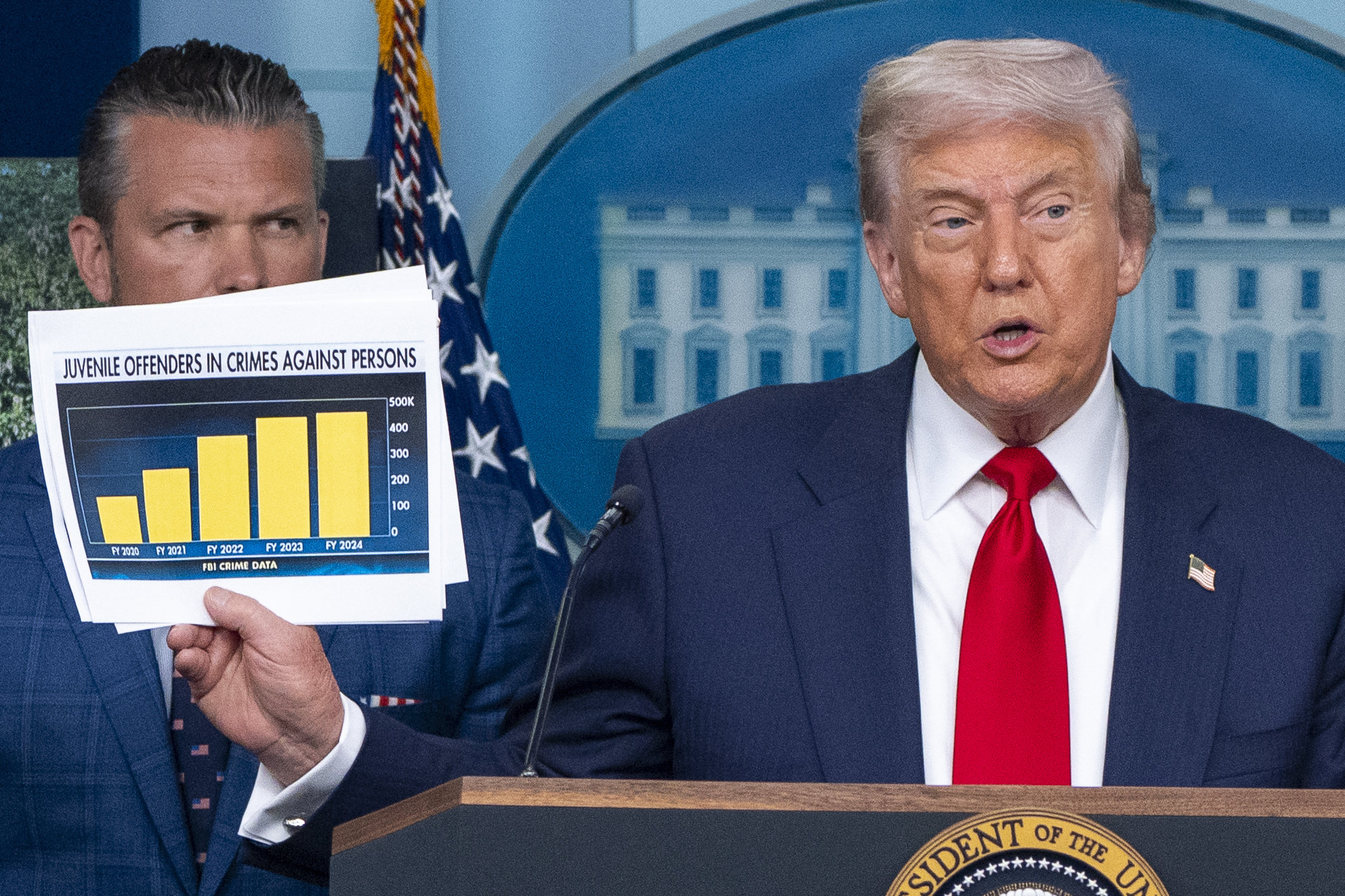
If Democrats don’t enact significant democratic reforms, multiracial democracy in America will remain under existential threat.
Republicans must carry the stain of the Trump era and the insurrection they incited for as long as their party continues to exist. To that end, efforts to expel Republicans who voted to overturn the 2020 election—led by Rep. Cori Bush (D-MO)—and to impeach President Trump—led by Rep. Ilhan Omar (D-MN) and others—are welcome developments.
But it would be a historic error to let matters rest with consequences for individuals, when the underlying problems are systemic. There can’t be proper accountability for the attempt to overthrow American democracy without making the democracy itself more resilient to such efforts. Watching Republicans fall in line behind Trump since 2016 has been an object lesson in understanding the incentives, structures, and institutions that drive political behavior, and the need to fix them. And the most important fix is one that would unwind our two-party system organized around incompatible visions of national identity.
What A Day
The United States has an 18th-century, antebellum system of elections. Most countries that have democratized since then adopted one form or another of proportional representation, which gives political parties power in proportion to their public support. Parties that win 15 percent of the votes in the election get 15 percent of seats in the legislature. In our single-member, winner-take-all system, the candidates who win the most votes walk away with all the political power. If you win 49 percent of the votes, you generally win zero percent of the power. As the New York Times editorial board put it, “single-member districts have become a threat to the health of America’s representative democracy.”
For much of the country’s history, this system functioned because the parties were loose coalitions with distinct regional profiles, and both parties could compete in most of the country. Before the Civil War, that system depended on compromise with slave owners. The party system collapsed in the 1850s when slavery dominated the national agenda. For much of the 20th century, our winner-take-all system worked only by keeping Jim Crow off the agenda.
Over the past few decades, the U.S. has undergone what political scientists call “the great sort,” culminating in a Democratic Party that enjoys dominant support among voters of color and those who live in cities and inner-ring suburbs, and a Republican Party that’s dominant among white Christians and in rural and exurban regions. As political identity has become bound up in racial and geographical identity, each parties’ supporters increasingly believe the other party’s supporters pose a threat to their way of life.
Trumpism took these divisions to their logical end: He convinced his supporters that the Democratic Party wants to destroy (white, Christian) America and that a violent coup was necessary to stop them.
The urban, multiracial coalition is larger than the rural, white Christian one; that’s why Republicans have won the popular vote just one time in the last 32 years. But the white Christian coalition enjoys structural advantages that let them hold power even without majority support. The U.S. Senate gives disproportionate power to rural, predominantly white states. That structural advantage filters by design up to the anti-democratic Supreme Court. And even in the absence of gerrymandering, the concentration of Democratic voters in metro areas gives Republicans a structural advantage in Congress and state legislatures. The GOP uses these structural advantages to pass wildly unpopular policies, and obstruct the multiracial coalition when Democrats are in power.
These structural issues along with the narrowness of the GOP’s coalition, explain how Donald Trump took over the GOP and why a majority of Republicans in Congress voted to overturn the results of a presidential election. A majority of Republicans in both chambers represent districts or states where large majorities view Democratic Party power as inherently illegitimate. There is almost no conduct that Republicans can’t accept when the alternative is siding with Democrats or acceding to their victories.
Yet despite representing a clear minority, Republicans can contend for power at the national level because of the structural advantages that the Senate, the electoral college, and single-member House districts confer. They don’t have to compete for the votes of anyone outside their narrow base in order to win vast power; they control enough veto points to block the Democratic agenda even when they lose; and at an individual level they’re more likely to be defeated by right-wing primary challengers than by Democrats in a general election. McConnell’s top aide even suggested days after the insurrection that Republicans would continue along the path of Trumpism, with or without Trump: “If you can replicate his draw amongst rural, working-class voters without the insanity, you have a permanent governing majority.”
Single-member, winner-take-all congressional districts have created the incentive structure for Republicans to make increasingly destructive appeals against multiracial democracy in order to gain power. Without a political reconstruction and deep reforms to that antebellum electoral system, there is no stopping Trumpism as the dominant force in the Republican Party. The Republican Party must be broken up. The institutions of our democracy—the House of Representatives, the Senate, the Electoral College, and the Supreme Court—have created an incentive for the Republican Party to drive the republic off the cliff. Even if some Republicans oppose Trump’s ethno-nationalism and show interest in starting a new party, they have few incentives for doing either under our current rules.
Many Democrats believe that their sole task is to defeat Republicans, and that change will follow naturally. But the structural incentives that led Republicans to embrace Trump in the first place remain in place, even as they lost the Senate and the presidency, and likely even as they’ve been tarred with complicity in an armed insurrection.
The only way to change their behavior is through the adoption of a robust democracy reform agenda—one that will help America complete its transformation into a pluralistic, multiracial democracy and splinter the Republican Party as it currently exists into oblivion. The campaign finance reform, voting rights, and redistricting provisions of H.R. 1 represent big steps forward as do efforts to eliminate the filibuster, reform the courts, abolish the Electoral College, grant statehood to Washington, DC, and allow Puerto Ricans a referendum on statehood or independence. These efforts would help stem the Republican Party’s ability to entrench minority rule in our democracy. But alone, these reforms themselves can’t stop a Republican Party steeped in white-grievance politics from returning to unchecked power.
This Congress should thus enact further democracy-expanding reforms that would require Republicans to attempt to appeal beyond the shrinking white rural minority our existing institutions are designed to empower.
The Fair Representation Act, H.R. 4000, would restructure the rules of our democracy to achieve this. Under the current system, over 70 percent of congressional general elections are uncompetitive and Republicans can routinely win more seats than Democrats while still losing the popular vote. H.R. 4000 would reform the system to create large districts spanning urban and rural areas that would elect multiple members of Congress through ranked-choice voting. Such districts would make urban and rural votes count equally, and would reward all parties for competing everywhere.
A new system like this would create a multi-party, proportional-representation system in the House similar to the kind many other democracies around the world enjoy. For those honest conservatives who genuinely oppose Trump and Trumpism (or for dishonest conservatives who would nevertheless like to shake off the stench of complicity with insurrectionists), proportional representation would allow them to create their own party without fearing that they’d be permanently shut out of power. Many of us on the political left, who often find ourselves at odds with the leadership of the Democratic Party, also find this idea appealing.
But more importantly, it would provide a bulwark against the possibility that another Trump-like figure will divide the nation in half through authoritarian and white supremacist appeals and prevent such a figure from fully controlling one of America’s only two parties. It would create an incentive structure to cool the Republican Party’s apocalyptic rhetoric, prevent one of the nation’s two political parties from descending further into white-nationalist authoritarianism, and foster a system based on greater diversity and pluralism.
“Hearts are not relevant to the issue; neither racial affinities nor racial hostilities are rooted there,” wrote civil and labor rights leader Bayard Rustin in 1965. “It is institutions…which are the ultimate molders of collective sentiments. Let these institutions be reconstructed today and let the ineluctable gradualism of history govern the formation of a new psychology.”
Rustin’s insight remains valuable: If we want multi-racial democracy to flourish in America, our institutions can’t continue to favor forces arrayed against that goal.
Democracy is how we resolve conflict through elections and laws. But the systems and rules established under a compromise with slavery in the late eighteenth century aren’t up to the challenges we face today. There are few ways to end our democratic crisis without dramatically changing how we organize our democracy. We find ourselves in a pitched battle between the forces of minority rule and multiracial democracy—and without updating the structures that shape incentives in our democracy, the antidemocratic forces may well prevail.
Waleed Shahid is the spokesperson and communications director for Justice Democrats.
Nelini Stamp is the director of strategy and partnerships for the Working Families Party.




